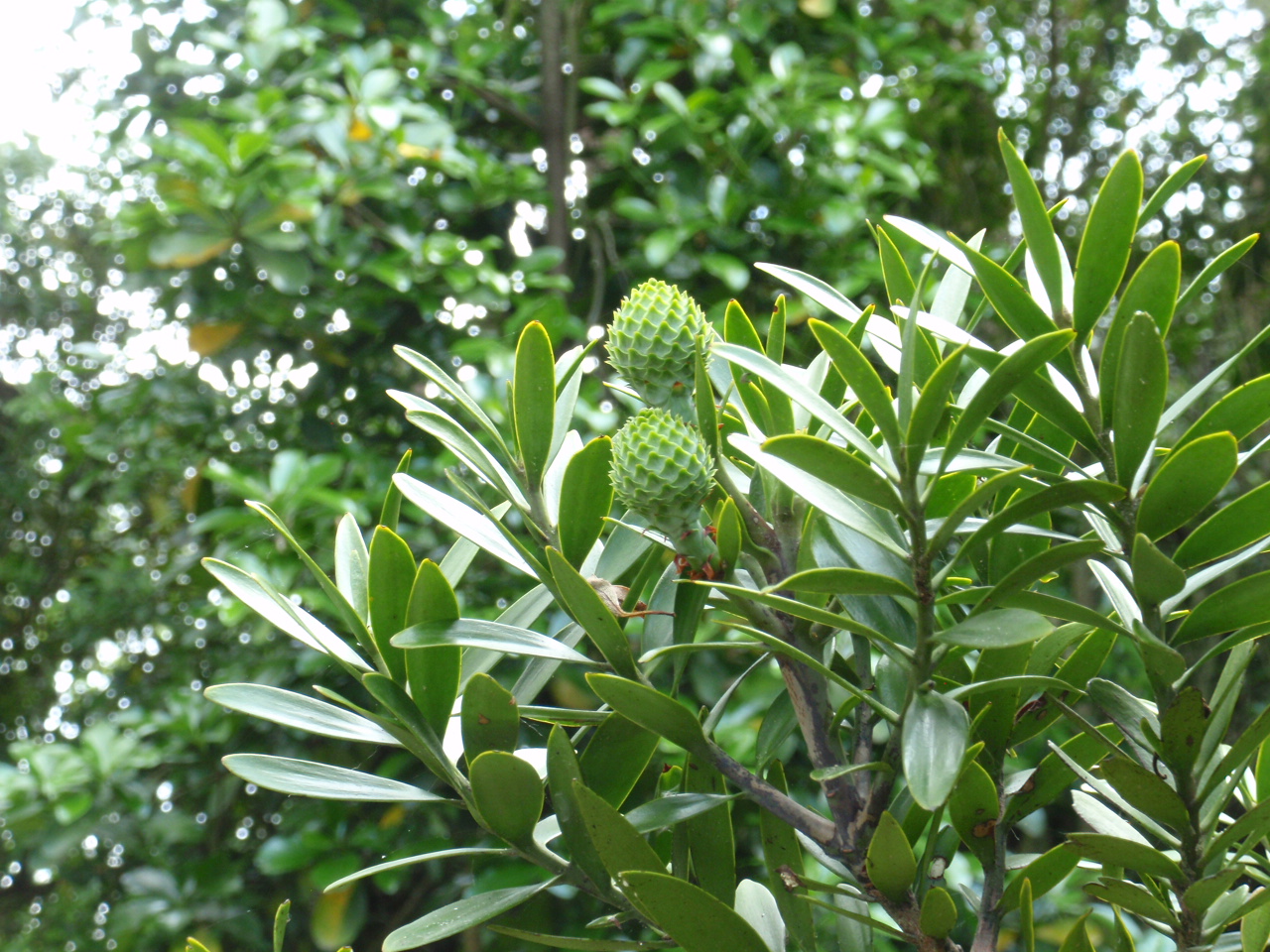

Agathis australis
kauri
One of the largest trees in the world with an average height of 30 m, a maximum height of more than 50 m, and an average trunk diameter of 3 m. Endemic to New Zealand, meaning it does not naturally occur anywhere else. Kauri once covered large areas of the northern part of the North Island of New Zealand with forests, but it can be grown throughout the country. Heavy logging has significantly reduced the number of kauri trees. Both the timber and kauri gum were much sought after. The remaining forests are now protected, but are threatened with extinction due to kauri dieback. This is caused by a pathogen that infects the roots and starves the tree to death. Agathis australis is a coniferous tree with thick, leathery leaves, 2-3 cm long on adult trees, and 5-10 cm long on juvenile ones. The leaves of young trees are often bronze-coloured. Male and female cones are borne on the same tree. The photo shows female cones which are rounder and shorter than the male ones. Ripe female cones release winged seeds that are dispersed by wind.
Agathis australis grows best in rich, fertile, moist and well-draining soil, but tolerates a wide range of soils including swamps, stony soils,and heavy clay. Plant in a sheltered position in full sun or part shade and stake the plant for the first season or two. Tolerates moderate frosts (zones 8-10) once established. Not recommended for coastal areas.
Kauri eventually becomes very large and thus needs plenty of room. However, it takes about 30 years to reach a height of 10 m, so it can be accommodated in a smaller garden for a long time.
Type of plant
Tree - EvergreenSize
to 30-50 m tallLandscape Use
specimen tree for large gardens and parksSpecifications
- Temperature: Half hardy
- Light: Medium High
- Moisture: Medium High
- Soil: Medium Heavy
- Wind tolerance: Average


